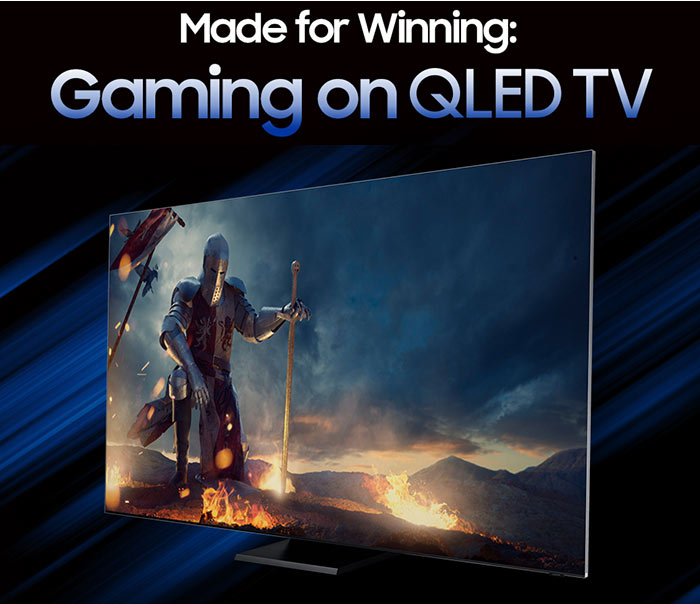Last month we saw LG herald the gaming qualities of its newest 48-inch 4K 120Hz OLED TV with G-Sync compatibility. It was just the latest entrant to the series, complementing the existing 55, 65, 77 and 88-inch models in a more gaming den-sized form factor.
Of course LG and Samsung are very fierce rivals and it looks like LG's proclamations and resulting coverage have prodded Samsung into some awareness-raising of its own gamer-friendly modern (2019 and newer) QLED TV sets. Today Samsung published a new infographic which distils the key qualities of its current QLED TV lineup, with an eye on the desires of gamers.

Like LG, it seems that Samsung has its eye on the capabilities of the next generation of consoles, like the Microsoft Xbox Series X, and Sony PlayStation 5, as much as people who game on PCs using big screens.
Samsung claims its newest QLED TVs are optimised for "more immersive and responsive gaming sessions". With consumers increasingly careful in considering gaming capabilities of TVs to narrow down their buying choices, this is a wise move. Samsung trumpets the following ke features of its new QLED TVs that will appeal to gamers:
- 4K@120Hz visuals via HDMI 2.1-certified connector
- FreeSync Premium compatibility to minimise stuttering and tearing
- Low Input Lag, as low as 9.8ms
- Game Motion Plus to minimise motion blur and halo effects
- Auto Game Mode
- Dynamic Black EQ for clear pixel peeping in shady areas without washout
- Immersive built-in sound system with added 'Object Tracking Sound' technology

Another feature worth highlighting with Samsung's latest and greatest QLED TVs is the 'Multi View' capabilities. This screen splitting function allows you to game on one side of the screen and follow a favourite streamer on the other, for example.
At the start of June HEXUS reported upon the impending release of the Samsung Odyssey G7 Gaming Monitors. A couple of days later Samsung officially launched the 27-inch Odyssey G7 monitor and 32-inch Odyssey G7 monitor, with immersive 1000R screen curvatures, QLED technology, and refresh rates up to 240Hz. You can see the G7 promo video below.






